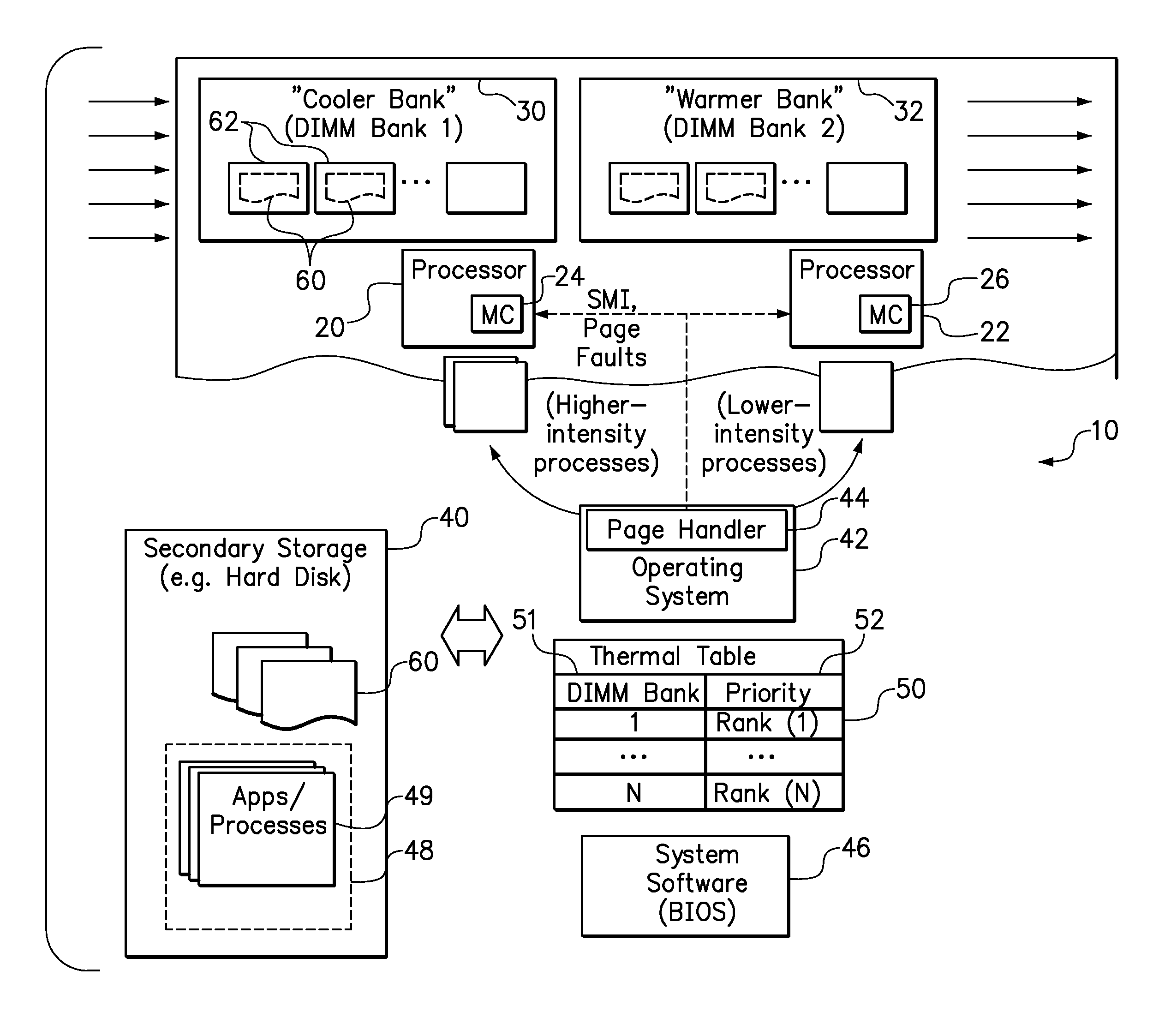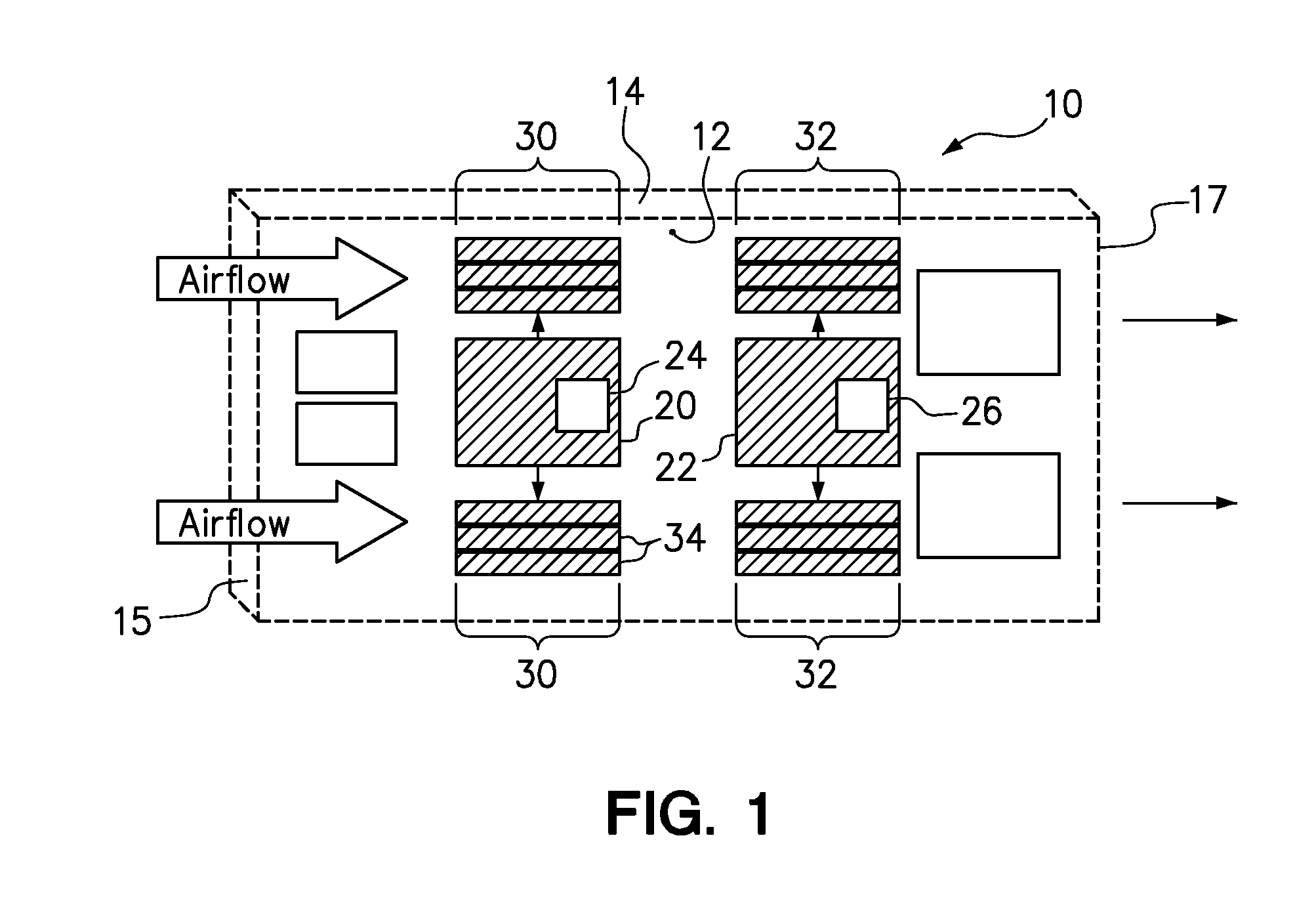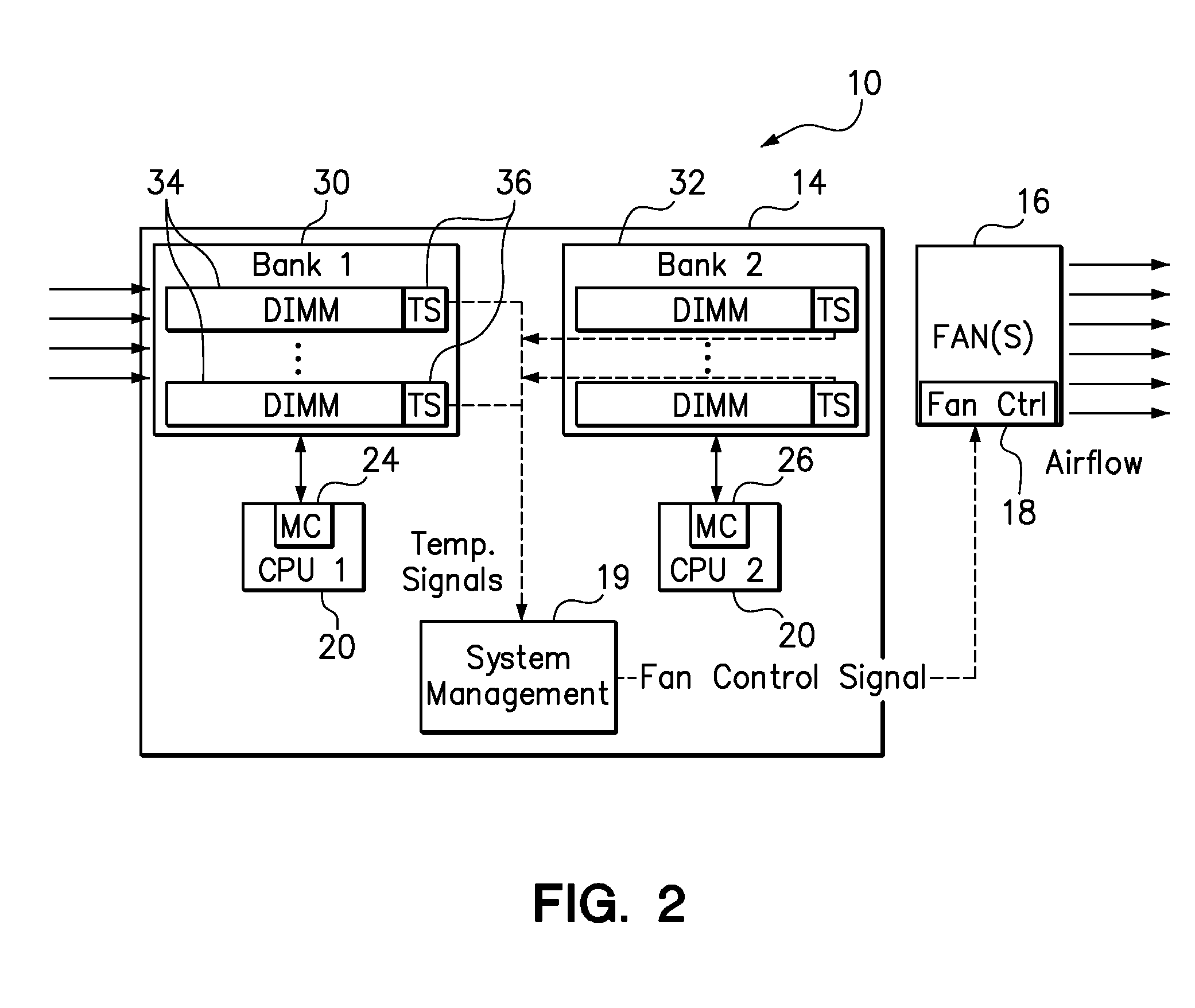Minimizing airflow using preferential memory allocation
a memory allocation and memory technology, applied in the field of computer system memory, can solve the problems of increasing the amount of energy consumed by memory, consuming electrical power and generating heat, and reducing the airflow rate and associated cooling cost, so as to achieve the effect of significantly reducing the rate of airflow and the associated cooling cos
- Summary
- Abstract
- Description
- Claims
- Application Information
AI Technical Summary
Benefits of technology
Problems solved by technology
Method used
Image
Examples
Embodiment Construction
[0013]Embodiments of the invention include a system and method for selectively allocating workload to heat-generating components of a computer system in a manner that minimizes the airflow required to cool the computer system. In one embodiment, workload is selectively allocated to different components according to expected differences in airflow at the different components. Specifically disclosed are embodiments wherein memory workload is selectively allocated to memory banks, and processor load is correspondingly allocated to processors utilizing those memory banks. The allocation of workload may be prioritized according to expected differences in temperature, as well as expected differences in airflow rate, at each of the different locations of the processors and memory banks. For any two memory banks, workload may be preferentially allocated to the one of the memory banks expected to receive cooler airflow based on its location. The workload may be preferentially allocated to th...
PUM
 Login to View More
Login to View More Abstract
Description
Claims
Application Information
 Login to View More
Login to View More - R&D
- Intellectual Property
- Life Sciences
- Materials
- Tech Scout
- Unparalleled Data Quality
- Higher Quality Content
- 60% Fewer Hallucinations
Browse by: Latest US Patents, China's latest patents, Technical Efficacy Thesaurus, Application Domain, Technology Topic, Popular Technical Reports.
© 2025 PatSnap. All rights reserved.Legal|Privacy policy|Modern Slavery Act Transparency Statement|Sitemap|About US| Contact US: help@patsnap.com



